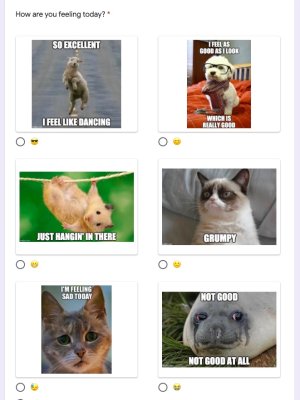Distance Learning FAQ: Solving Teachers’ and Students’ Common Problems
Lessons learned from problems during remote learning can help inform teaching and learning this fall.
Your content has been saved!
Go to My Saved Content.Over the last few months, the pandemic has created many challenges for teachers, students, and parents as they transitioned into home-based learning.
We spoke with more than 100 teachers and students about the common issues they faced and crowdsourced teachers’ solutions to help ease the transition into blended learning this fall.
Problem: Online Directions Are Difficult to Follow
Solution: To make sure students understood directions, Casey Chon, a fifth-grade English and social studies teacher in the San Francisco Bay Area, California, scheduled live sessions two to three times a week to go over instructions and allow students to ask questions as a class. She also met with students one-on-one who needed extra support.
For North Carolina teacher Kasey Short, if multiple students in her sixth-grade English and social studies classes had the same question about an assignment, she posted an announcement in Google Classroom for all to see. She also created screencasts that explained assignments in detail, which she says cut down on the number of overall questions from students.
To provide clarification or feedback in the moment, Emma Chiappetta, a secondary math teacher in Mount Pleasant, Utah, found it helpful to use the Google Docs chat feature as students were doing work, while Marcos Cortez, a high school English teacher in Saratoga, California, created videos where he commented on students’ individual work. “I definitely saw an uptick in students actually applying my suggestions to their rewrites and future work,” he said.
Problem: Tech Issues Disrupt Work
Solutions: To troubleshoot common tech problems in online learning, educators we talked to recommended using simple technology that students are already familiar with, instead of trying out new tools with pizzazz. “If they feel they can navigate with ease, they’re more likely to engage,” says Erin Sims, a seventh-grade English and social studies teacher in Shelby, North Carolina.

Having a “help desk” system in place can also alleviate tech issues. Jessica Heckman, a teacher in Bloomfield Township, Michigan, says she found a good solution from her third- and fourth-grade students. They came up with a twist on “Ask three before me”—a practice often used in the classrooms with hand-raising. Now, before asking her a question virtually, students know they can Google the issue, ask their sibling, or FaceTime/chat a friend.
With the new approach, Heckman found that students started communicating with each other to ask for help and troubleshoot. “The brightest part of being separated by screens from my students was that I saw them feeling empowered to take care of each other,” says Heckman. “That gives me some hope that no matter what learning looks like next year for school, we will make it through.”
Problem: Students Struggle With Work-Life Balance
Solutions: “I won’t sleep for the whole night or only for a very short amount of time, and then have to go into work, come home, and do schoolwork,” said a high school student in South Farmingdale, New York, who says she’s now working double the hours she used to.
To help your students juggle competing demands, talk to them about what is on their plate and how you can support them, educators we talked to advised.
Brittany Mendoza, a high school English as a Second Language teacher in Hoffman Estates, Illinois, says she offered recovery and alternative assignments to lessen students’ anxiety about keeping up with school work. Every week, she emailed her students or called their homes if she hadn’t heard from them in a while, and focused her communication on their well-being and less about their work.
On the other hand, Alex Barrett, a high school French teacher in Annapolis, Maryland, says she didn’t penalize late work, while Nicole Newman, a middle school special education teacher in Tacoma, Washington, posted the work for the week each Monday, then gave students until the last day of school to turn it in.
Problem: Students Miss Collaboration and Peer-to-Peer Interaction
Solutions: Many students shared that they missed collaborating with their peers and teachers—both for socialization and to help their understanding of the content.
As a solution, Forrest Hinton, a high school math teacher in Durham, North Carolina, says he used live video sessions for collaborative work and to assess gaps in students’ understanding. When using Zoom, he had students briefly re-teach and summarize concepts they had learned asynchronously, then had them do small-group work in breakout rooms to solve problems among their peers.

Similarly, Ryan Tahmaseb, director of library services at a K–8 school in Weston, Massachusetts, said he translated Think-Pair-Share to Zoom. Tahmaseb divided his students into Zoom breakout rooms, had them “record their answers on a shared Google doc” to a class-wide prompt, then had volunteers share out their responses to the whole class.
To promote peer-to-peer discussion, Cortez says he adapted his Four Corners classroom strategy to online learning. Instead of walking to a different part of the classroom depending on whether they strongly agree, agree, disagree, or strongly disagree with something, students select their answer in Google Forms and get to see their peers’ opinions in a pie chart.
Problem: Students Struggle to Create Structure Away From the Classroom

Solutions: Noting that students struggled with time management, Olivia Gregory, a sixth-to-eighth-grade English teacher in Rockhill, South Carolina, and Heather Garcia Queen, a sixth-to-12th-grade school psychologist in New Hampshire, both said they videoconferenced with students one-on-one to teach them how to create a schedule, prioritize their tasks, and break down instructions.
Laura Bradley, an eighth-grade English teacher in California, on the other hand, did quick check-ins with students through Google Forms and Google Classroom to see where they were on a project and to offer help. “Students don’t know how to manage their time with so much work showing up at once. Their days are scheduled for them at school, but there’s no such structure at home.”
And after finding students getting confused about Google Meets and assignments, Pete Barnes’s school in New Albany, Ohio, reorganized all meetups to be on consistent days and times and posted this schedule, along with assignments, in a single document with hyperlinks.
Problem: How to Deal With Difficult Emotions
Solutions: Given shelter-in-place mandates, many students reported feeling isolated, depressed, and overwhelmed. “The lack of a support system has definitely been the hardest part about not physically attending school,” shares a student in East Haven, Connecticut.

Start by taking a pulse check of students’ well-being before launching into academics, educators suggested. This may look like students’ taking surveys or even typing their emotional state into a Google Form, like Sarahi Monterrey’s students; she is a high school English-language learner teacher in Wisconsin.
To help his elementary students feel connected, John Thomas says he broke down his morning meetings into asynchronous components. In response to Thomas’s video greeting on Seesaw, students typed or left a voice comment back, and later, they started responding to their peers using prompts of things to share—like something shiny or a pet.
Give moments of joy too. Lynn Gallant, an eighth-grade teacher in Ontario, Canada, says she found that weekly surprises helped. Every Friday, she offered a challenge, like scavenger hunts, dance challenges, and building blanket forts. She also sent letters home to let students know that she was thinking about them.
